The cat-ketch JANE ANN—18′ LOA, with a beam of 5′ 6″—is builder Mike Kiefer’s interpretation of the lapstrake daysailer Robin, designed by naval architect Rob Pittaway, formerly of Mystic Seaport. Robin was originally conceived as a trailerable open boat that could be sailed or rowed for short distances in New England’s coastal waters. Pittaway said his design was inspired in part by Nathanael Herreshoff’s Columbia Lifeboat Tender, which has a striking resemblance to JANE ANN.
Kiefer, a South Haven, Michigan-based boatbuilder, modified Pittaway’s design by adding a short foredeck, 3″ side decks, an aft deck with a lazarette underneath, and a steam-bent white-oak coaming, which combine to scatter spray in open waters. A motor mount bolted to the aft deck accommodates a 3-hp long-shaft outboard for auxiliary power to get in and out of channels on the Great Lakes, where few natural harbors exist. Two rowing stations provide alternative propulsion, but maneuvering under oars in relatively long and narrow Great Lakes channels, with surging waters and heavy traffic, can be a tricky proposition.
Robin’s original rig called for a mainsail with a diagonal sprit and a mizzen with a horizontal sprit. There were no headsails. Under Kiefer’s interpretation, JANE ANN is rigged with a balance lug mainsail, which has a boom, while the mizzen setup remains unchanged. Collectively, the Robin’s sails carry 103 sq ft of Dacron (70 on the main, 33 on the mizzen).
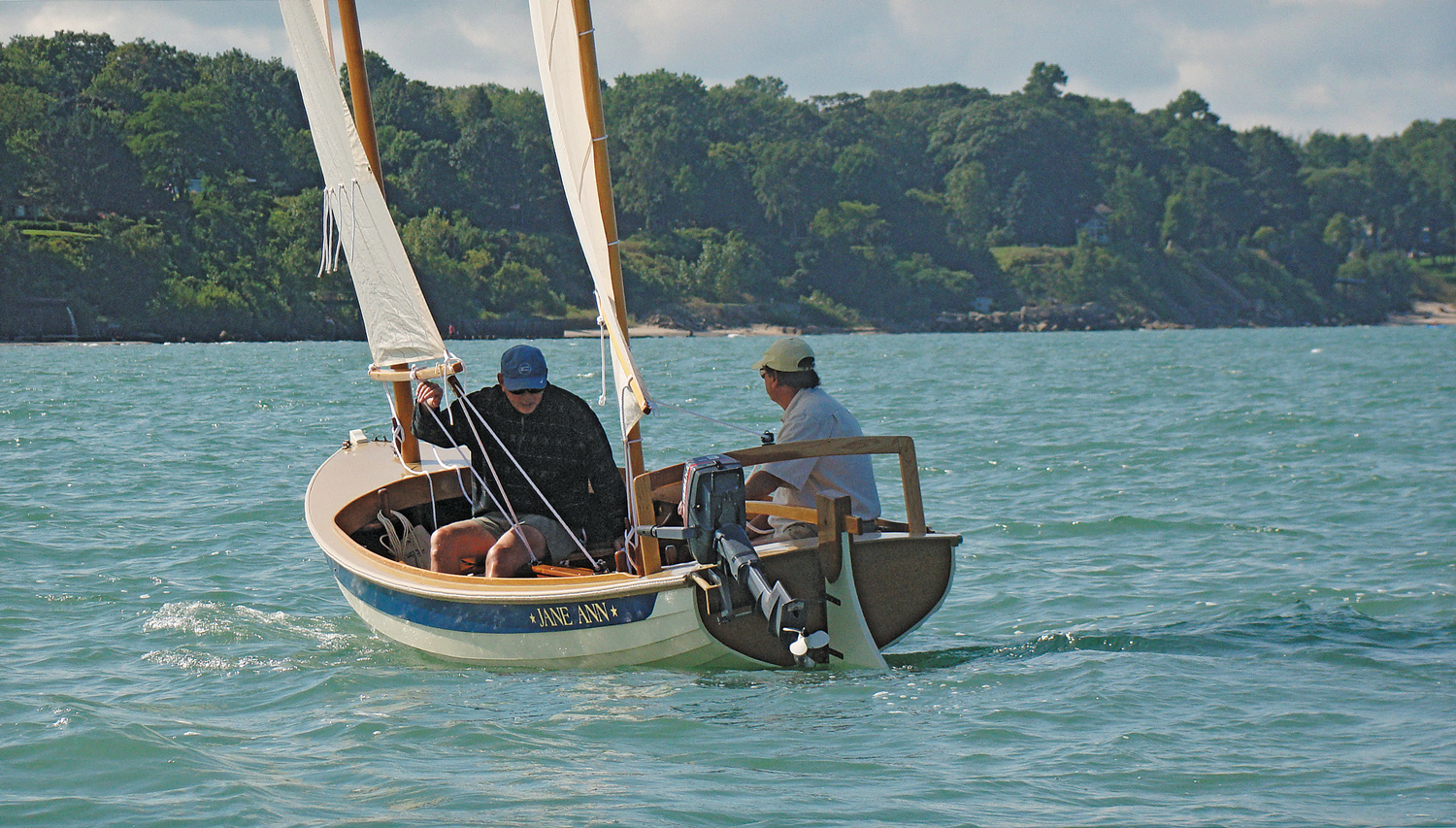 George D. Jepson
George D. JepsonThis 18’ cat-ketch, designed by Connecticut-based naval architect Rob Pittaway for New England’s coastal waters, is equally at home on the Great Lakes or inland waters, under sail, auxiliary outboard power, or oars.
JANE ANN’s rigging is simple, with minimal hardware. A hole pierces the top of each mast, taking the place of a sheave, to accommodate the halyards. Sheets are neatly tied to the main boom and mizzen sprit, and run through jam cleats. The mainsheet also runs through one wooden block attached to the boom, which Kiefer crafted to assist the helmsman in gaining purchase in a stiff breeze.
On a bleak winter’s day over a decade ago, my wife Amy and I stopped by Great Lakes Boat Building Company—Kiefer’s rural shop out-side South Haven, Michigan—to “talk boats.” I mentioned that we were interested in a trailerable daysailer for the Great Lakes. Moments later, Mike pulled several designs from his files, including a lines drawing and a description of Pittaway’s Robin.
The following autumn, Mike laid the keel for our new Robin. By the time of my next visit, the backbone, made of Michigan sassafras, was in place on the jig, ready to accept her planking. Over pancakes and eggs at a nearby diner, he described the modifications he planned for the boat.
Winter settled in and the wood-burning stove in Mike’s shop glowed red as he hung the boat’s 9mm okoume plywood planks—eight to a side—gluing their laps with epoxy. Frames (steam-bent), thwarts, centerboard and trunk, and trim were all fashioned from sassafras. “For my money, ‘sassy’ is the best [native Michigan] wood for small-craft construction that we have,” explained Kiefer. “It glues, accepts fastenings, and steams well. It has a medium density and weight, and it’s durable.”
Warm spring breezes signaled the end of winter, as the boat neared completion. The masts, which are identical and fit either the main or mizzen stops, were shaped from Sitka spruce. Varnishing and painting the boat were the only tasks remaining before she would be launched in the Black River.
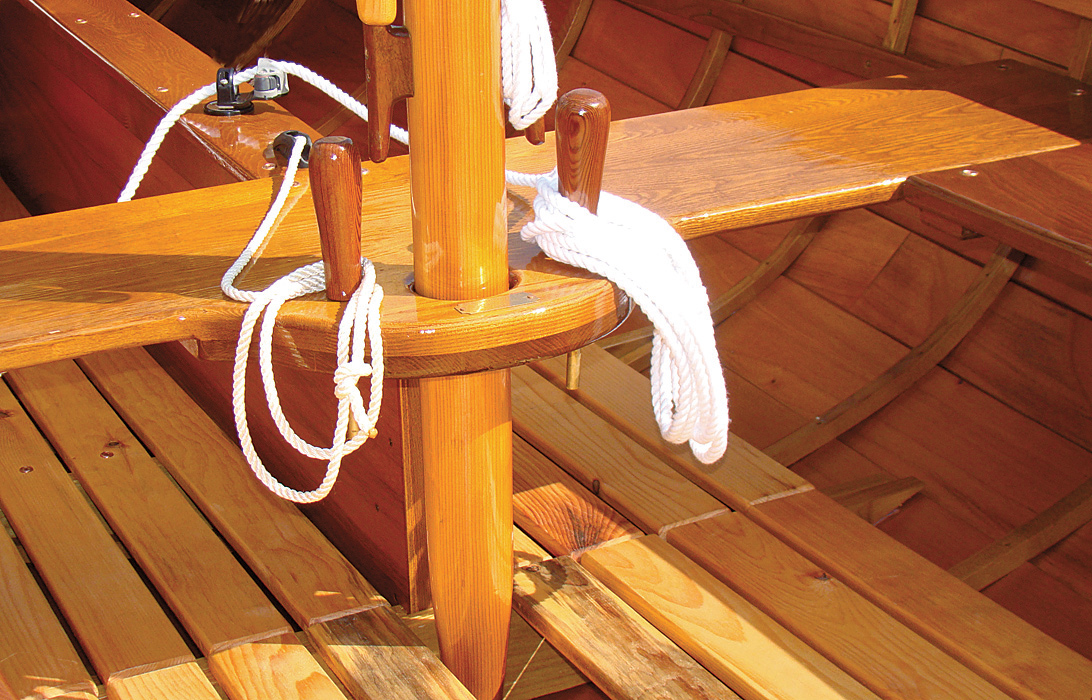 George D. Jepson
George D. JepsonBoatbuilder Mike Kiefer modified Pittaway’s design, adding flat floorboards to the bilge and belaying pins for stowing lines.
On a lovely May morning, the boat sat on the stocks as I stepped into Kiefer’s shop. Dust floated in the sun’s rays slanting through the doorway, illuminating the boat’s lovely lines. The aroma of freshly sawn wood, shavings, paint, and canvas permeated the air.
As we stood gazing at her fair sheer, Mike looked like a young boy at the county fair, anxiously waiting for someone to bid on his prize calf. We christened her JANE ANN, for our daughter.
JANE ANN’s maiden sail was down the Black River, bound for the open waters of Lake Michigan. Sails were set in the lee of the channel. As we passed the pier heads and barn-red South Haven Light, we switched off the engine and trimmed the sails. She heeled slightly, slicing through the light chop. It was an exhilarating sail for builder and owner alike.
She is beautiful to behold, whether viewed from the cockpit, standing on the dock, or from another boat. Her bright interior finish accentuates the wood grain and her graceful lines are eye-pleasing from virtually every vantage point. Under sail or oars, she draws waterfront admirers.
With a spacious cockpit and deep, sumptuous seating, JANE ANN is a comfortable daysailer with four adults aboard, and could be a camp-cruiser for two, with the addition of a cover for inclement weather. Over the years, she has proven to be fast in gentle breezes, and with an experienced helmsman she has sailed in winds up to 30 knots in heavy seas. She sails well close-hauled, is a delight on a reach, and jibes deftly. A particular joy is sailing downwind wing-on-wing. JANE ANN rows easily, even with three or four adults aboard.
She also tows effortlessly behind a vehicle. Weighing less than 400 lbs, she is light enough to be maneuvered onto her trailer by one person. At boat ramps, she can be rigged and ready to sail within 15 minutes. Hauling out and dropping the rig afterward take about the same amount of time.
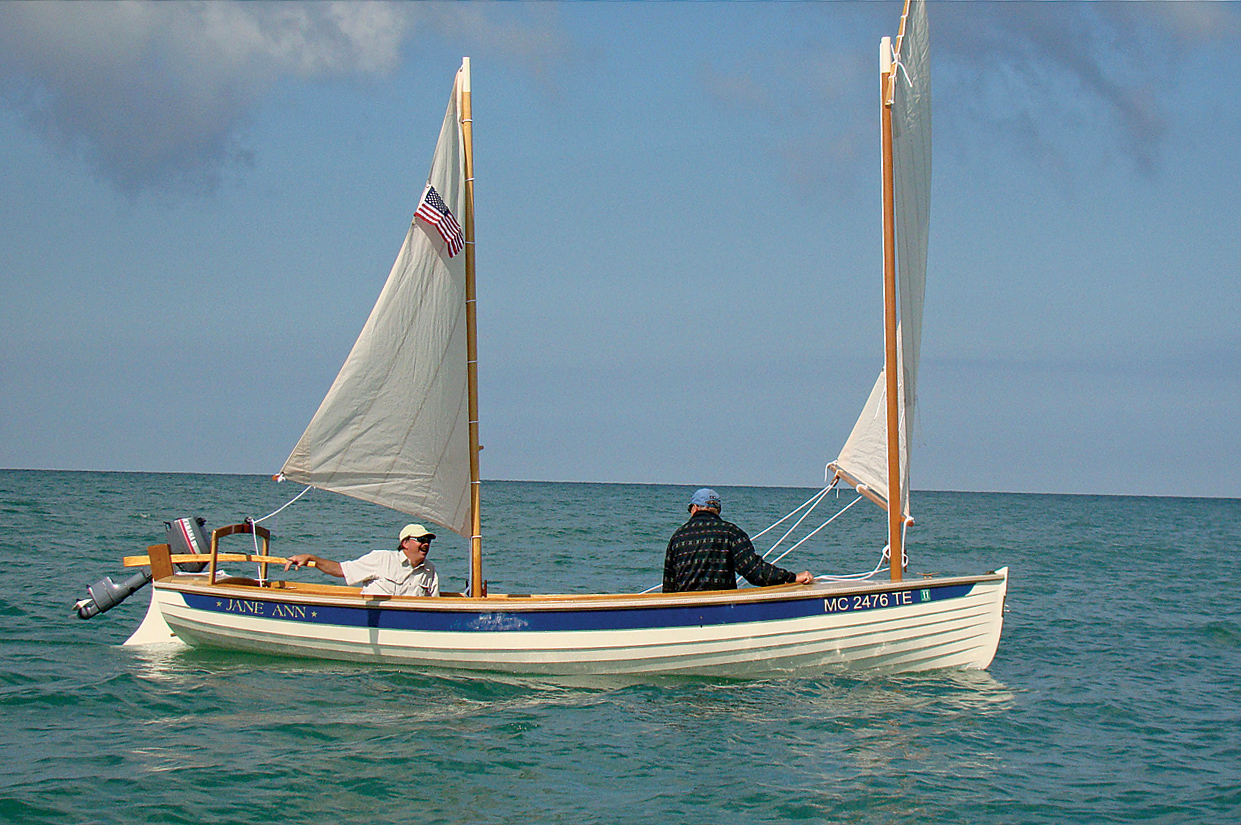 George D. Jepson
George D. JepsonJANE ANN performs well in light air and is heart-pounding fun in a stiff breeze. With the addition of fore, aft and side decks by Kiefer, she has proven to be snug and dry.
After several summers sailing JANE ANN, I discussed possible alterations with the builder. The original floorboards followed the shape of the hull, and were not comfortable while moving about or sitting. So he designed, built, and installed a new flat platform, which is much more agreeable. He added belaying pin stations—two on the forward coaming and two at the mizzen mast hole. Finally, Kiefer built a wooden traveler at the aft end of the cockpit, which has a jam cleat at its center through which the mizzen sheet runs. Previously, with the cleat fixed atop the rudder, the sheet tended to become tangled with the outboard motor. The traveler also serves as a crutch for the mizzen sprit.
A fresh coat of paint on the hull—Hatteras off-white, which has a tinge of the color of the sun—and a new slightly darker blue sheer stripe, a coat of varnish on all of the brightwork, and a new layer of tan paint on the deck completed the boat’s fetching new livery (paint scheme). Freshly varnished masts were re-rigged with new lines, and she was ready to sail yet again.
Under a dazzling blue, late-summer sky dotted with white cumulus clouds, JANE ANN rounds South Haven Light on a starboard tack, her cream-colored sails— reminiscent of Egyptian cotton—filled to the south-westerly breeze. Heads turn along the breakwater, while this lovely wooden boat begins life anew on the Great Lakes.![]()
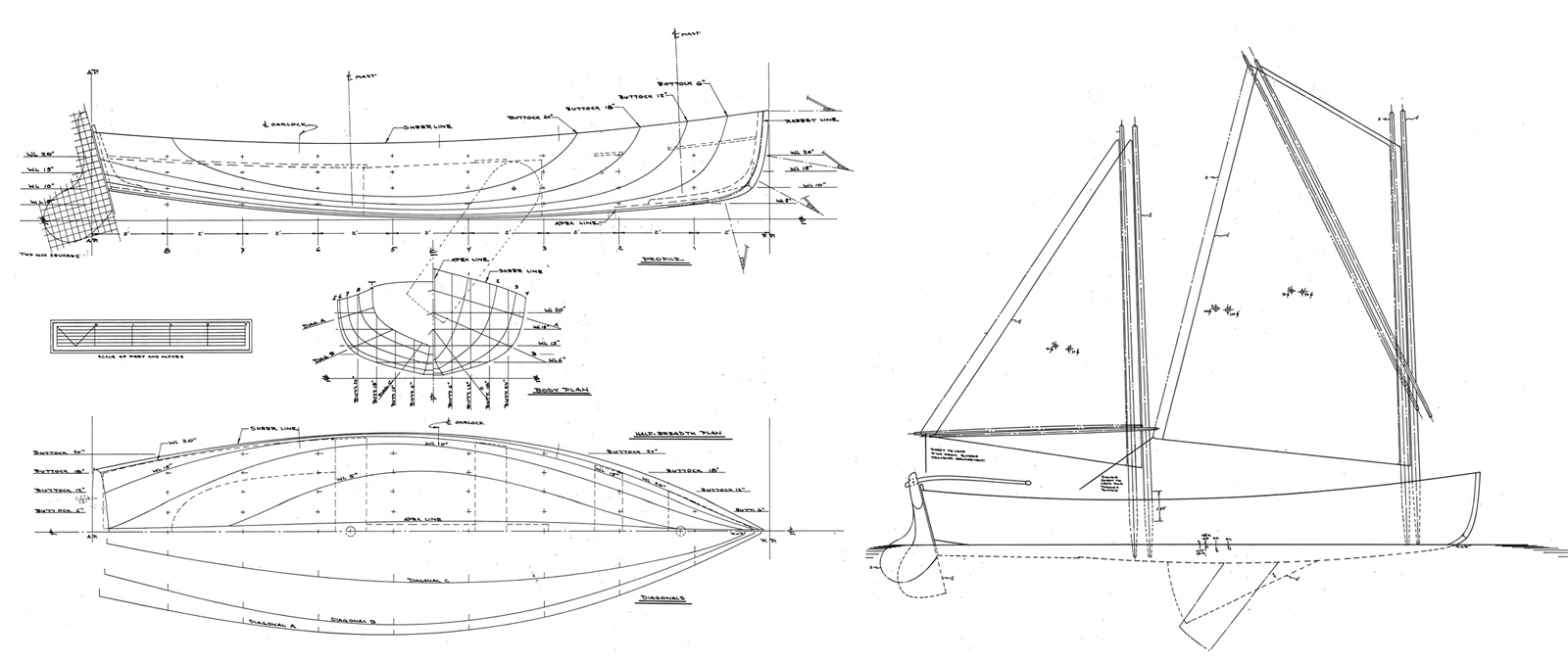 Rob Pittaway
Rob PittawayIn all views she resembles Nathanael Herreshoff’s Columbia Lifeboat Tender, which was her inspiration. Like her forebear, each of the fetching JANE ANN’s lines is placed with purpose. Her full midsection and moderate deadrise indicate a comfortable and accommodating boat.
This Boat Profile was published in Small Boats 2011 and appears here as archival material. If you have more information about this boat, plan, or design – please let us know in the comment section.
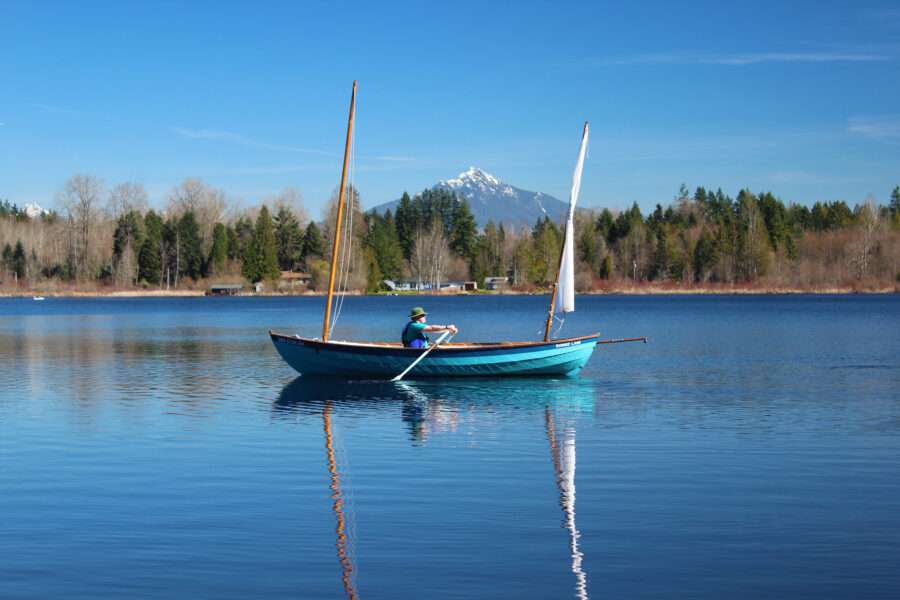
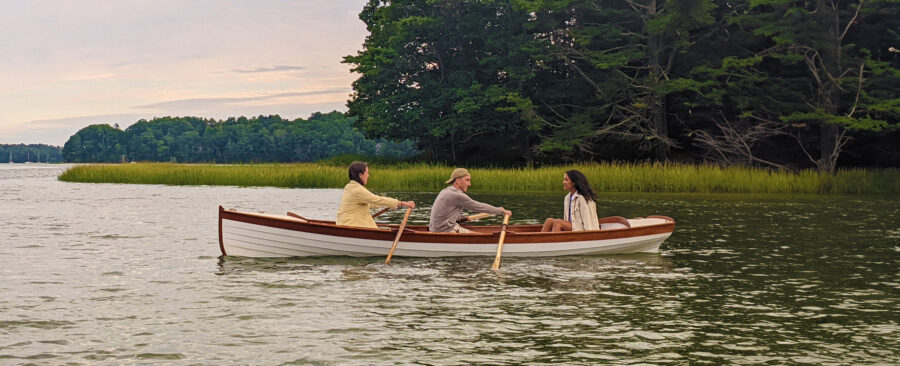
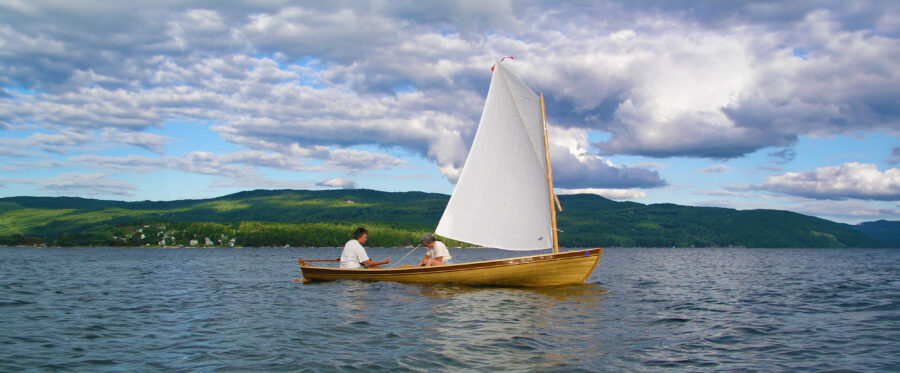
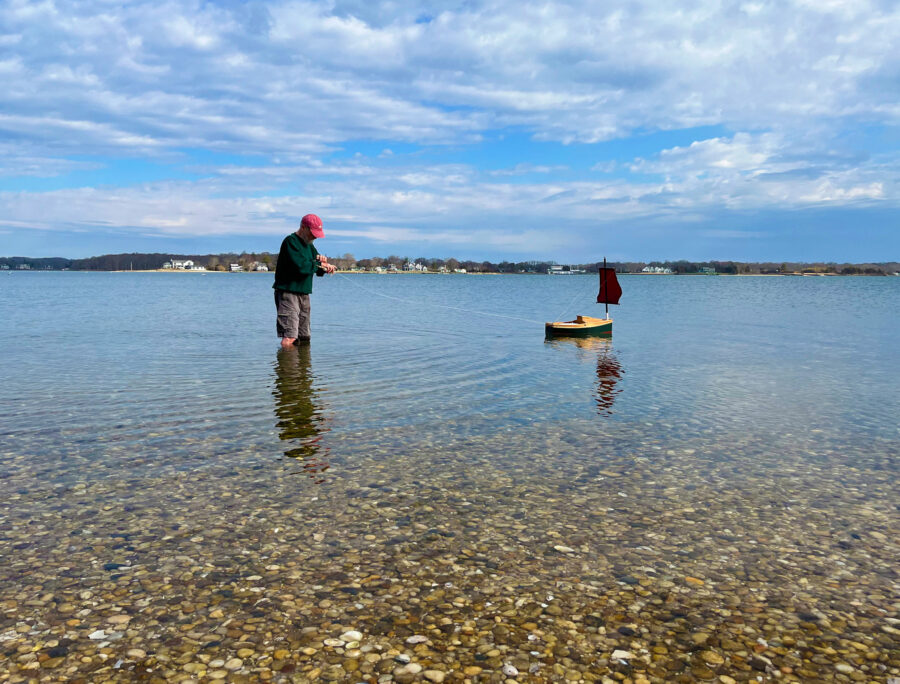
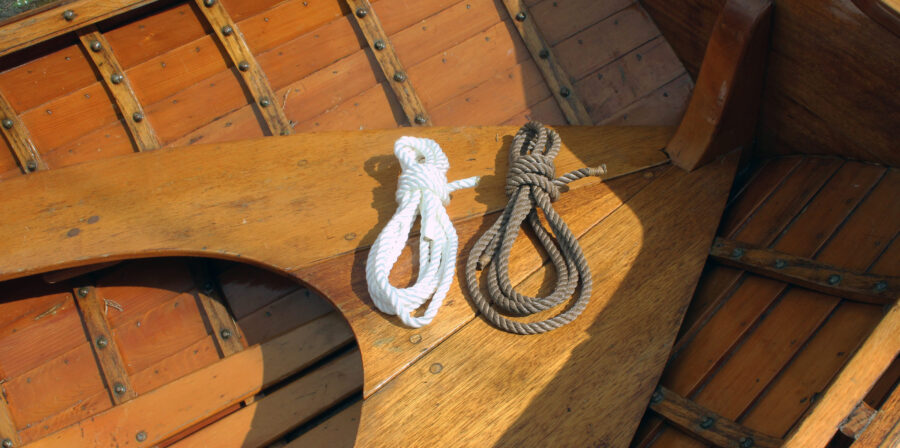
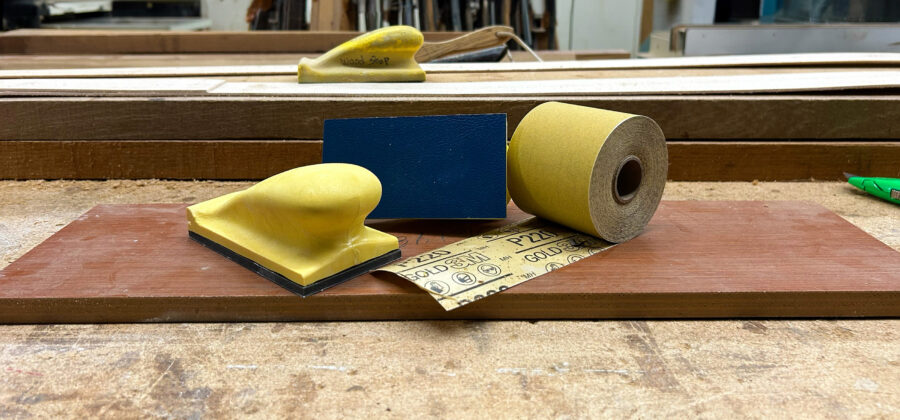
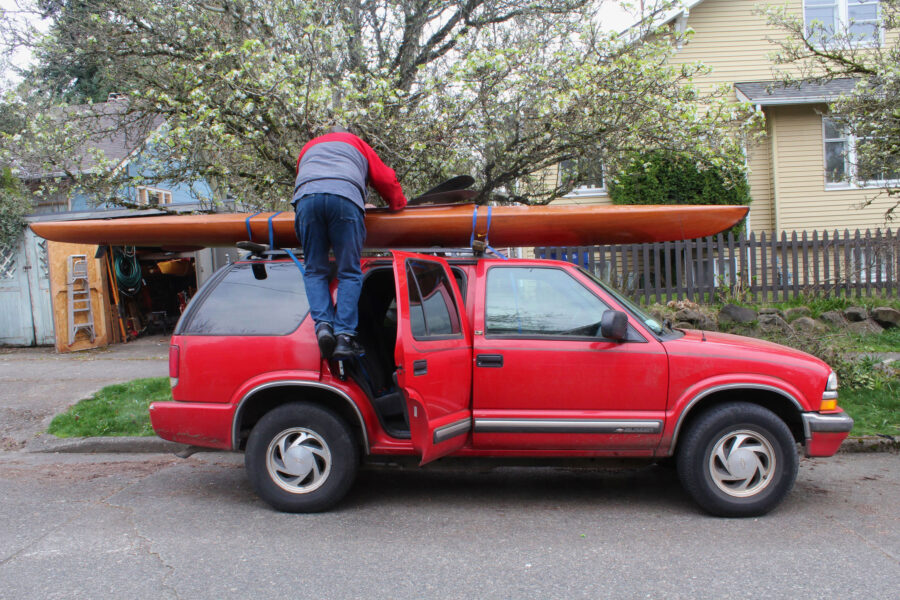
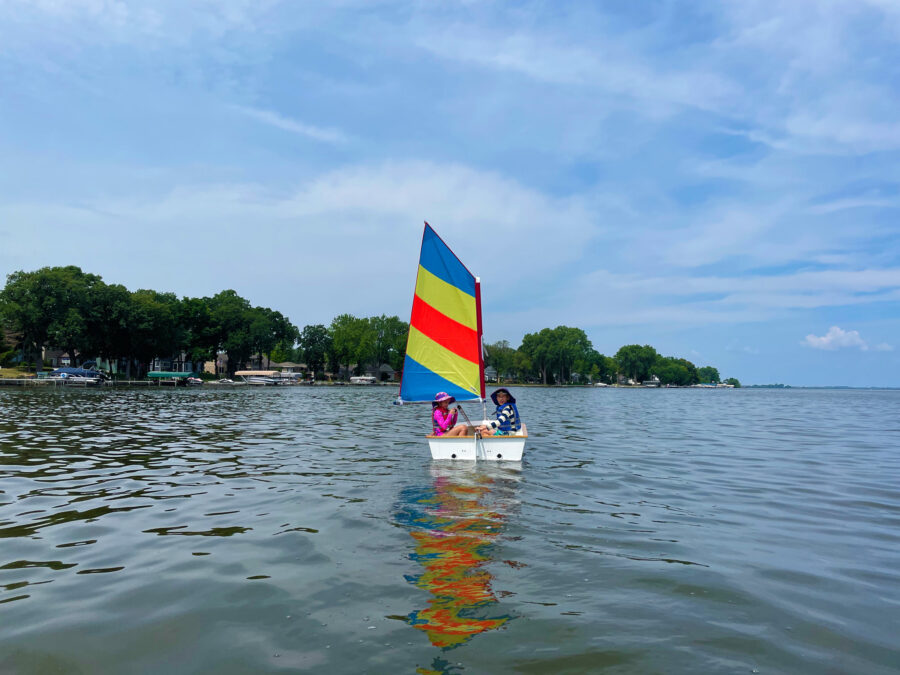
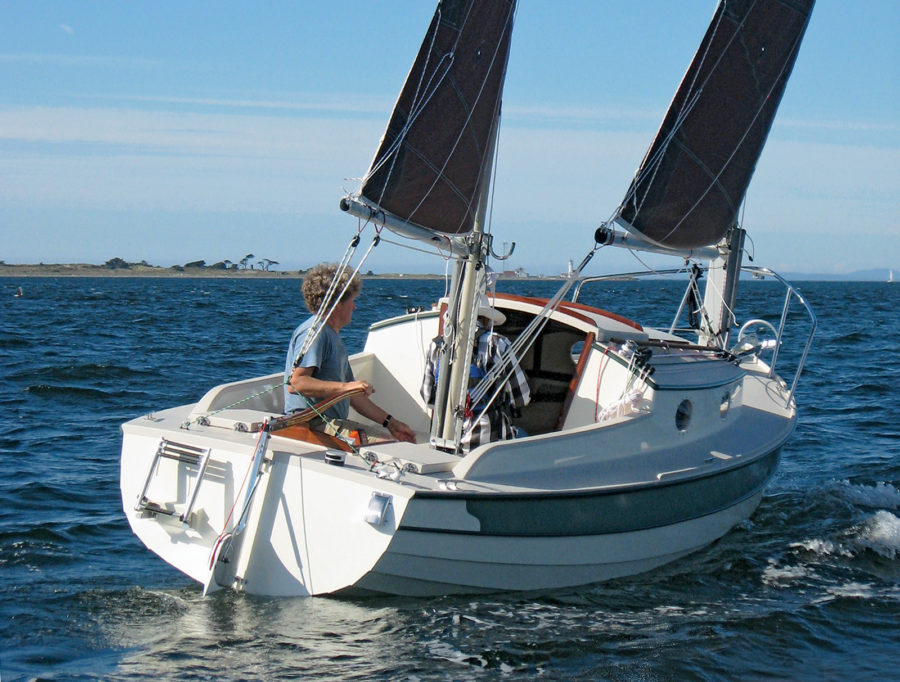
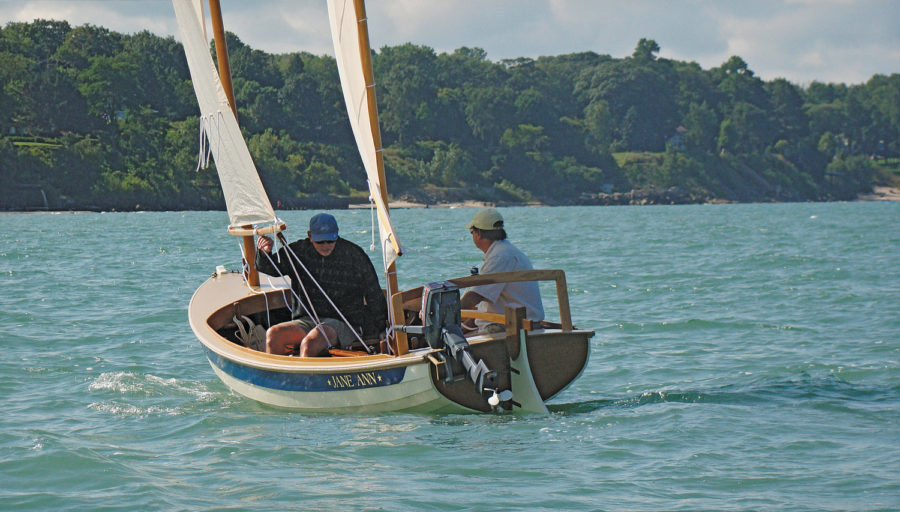
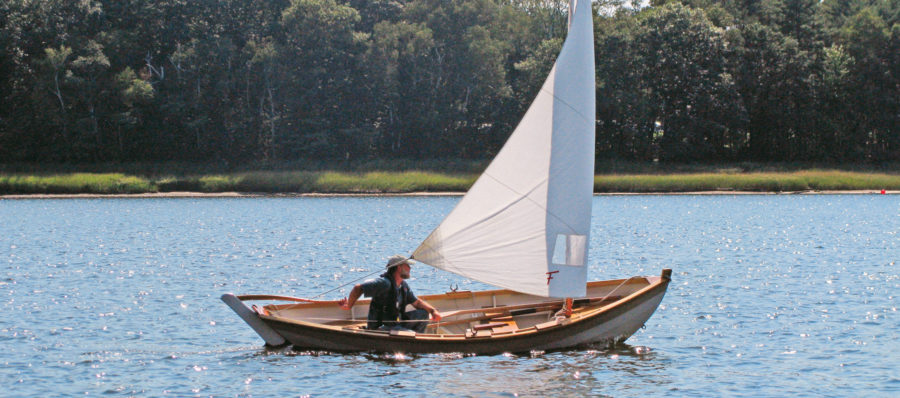
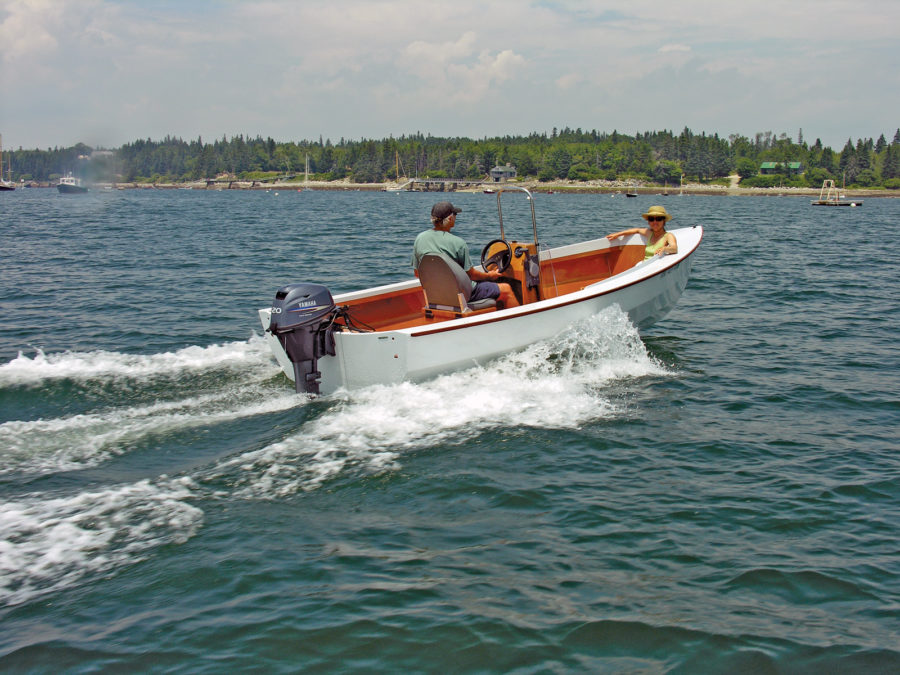
What a nice boat.
Are plans available for purchase?
Mike Kiefer of Great Lakes Boat Building Company closed his business a few years ago. I left a message with designer Rob Pittaway but haven’t heard back from him. He may be retired. If I find that plans area available, I’ll provide information at the end of the article.
—Ed.